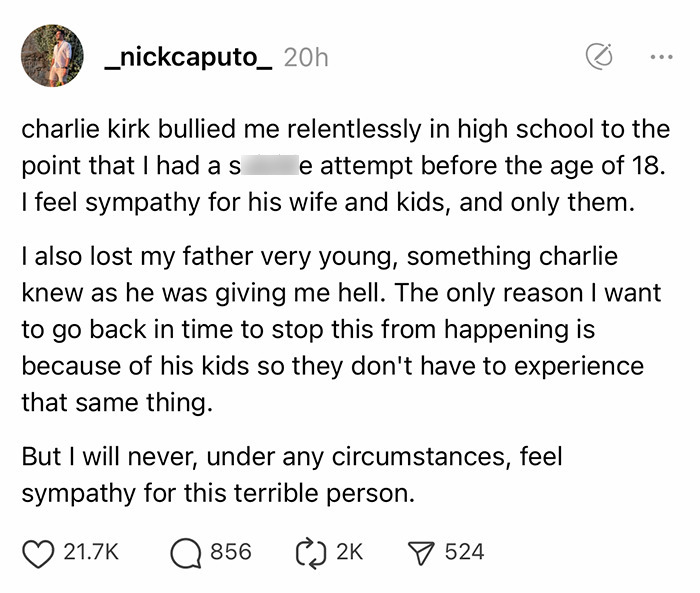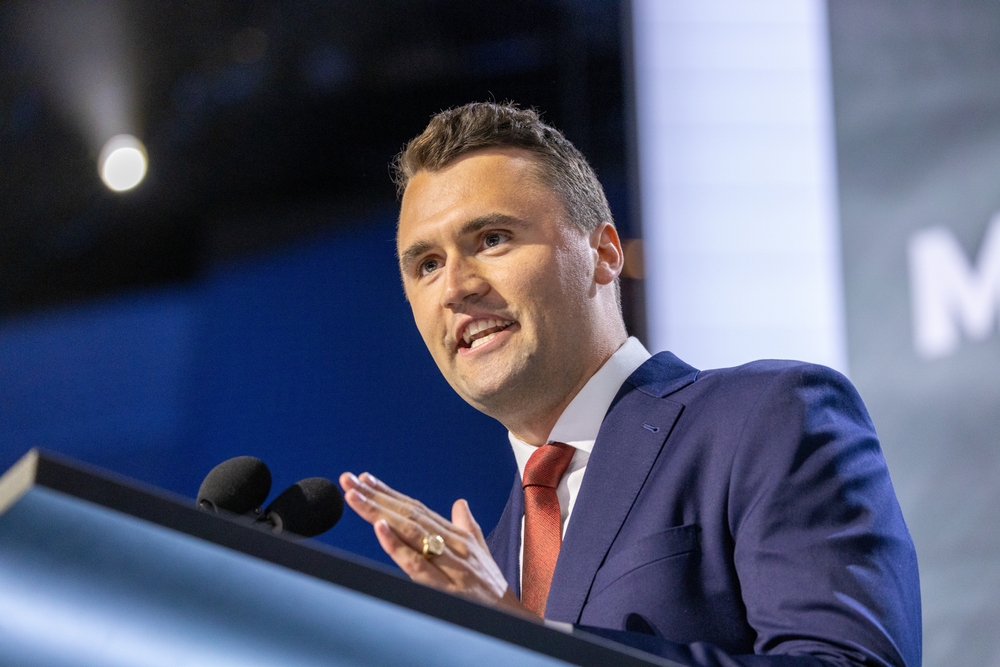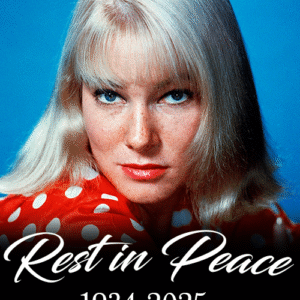Charlie Kirk’s Legacy and a High School Allegation
Charlie Kirk, founder of Turning Point USA, was tragically assassinated this month. His death left a divided following and a legacy of heated debates. Shortly after, a surprising claim surfaced online.
A man claiming to have attended high school with Kirk alleged that Kirk subjected him to years of relentless bullying, pushing him close to suicide. The words painted a vivid picture of emotional pain that lingered long after graduation.
Questioning the Claim
The authenticity of this claim remains difficult to verify, as Kirk can no longer respond. Yet, the post quickly caught attention online. While many shared tributes and memories, others focused on this former classmate’s account, portraying Kirk as a teenager who mocked and humiliated peers for sport.
Some criticized speaking ill of the deceased. Others defended it, arguing that truth has no expiration date, and some survivors only find courage to share once the person who hurt them is gone.
Growing Up in High School
High school is a challenging time. Students juggle academics and social hierarchies, where even small insults can feel overwhelming. If Kirk was as popular and outspoken as reported, his words could have echoed painfully through hallways.
Bullying rarely happens in isolation. The reactions of peers—laughter or silence—often magnify the victim’s distress.

The Emotional Weight of Bullying
The former classmate said Kirk’s treatment drove him to consider suicide. Sadly, this aligns with research: bullying ranks high among teen suicide triggers. Emotional scars often persist into adulthood, affecting self-worth, trust, and mental health.
The fact that this person spoke out only after Kirk’s death highlights how deeply the memory endured.
The Role of Schools and Families
Schools often promote zero-tolerance policies, but enforcement varies. When complaints are dismissed as “just teasing,” the harm intensifies. Training staff to identify and act on bullying is crucial.
Safe reporting avenues—like anonymous forms or trusted adults—can make a difference. Families also play a key role by listening and validating their children instead of telling them to “toughen up.”
Understanding Bullying
Why do some kids bully? Often, it’s about control, insecurity, or mimicking behaviors at home. While it never justifies the act, it explains how bullying spreads.
Bullying can be subtle. Students may hide it out of shame or fear. Signs to watch for include:
-
Sudden school avoidance or fake illnesses
-
Drop in grades or loss of interest in hobbies
-
Emotional changes such as irritability or statements of worthlessness
Reporting and Support
In the U.S., there are several reporting avenues:
-
Within school: Teachers, counselors, or principals
-
Anonymous reporting: Hotlines or online forms
-
Parental advocacy: Meetings, emails, or ensuring complaints are addressed
-
Severe cases: Law enforcement involvement for threats or physical harm
-
National resources: StopBullying.gov offers state-specific guides and support
Early action is critical. For victims, knowing someone believes and supports them can be life-changing.

Healing After Bullying
Even when bullying ends, recovery takes time. Counseling, therapy, peer support groups, and family encouragement help rebuild confidence. Small gestures—listening, kind words, or encouragement to resume activities—can make a big difference.
Lessons from the Allegation
The full truth about Charlie Kirk’s past may never be known. Yet, the story emphasizes a larger reality: bullying is not harmless fun. Its effects can last years, shaping lives and sometimes pushing victims to the edge.
Kirk’s public persona contrasted with the silence he allegedly caused in others. This tension reminds us that public figures may leave unseen emotional footprints.
Closing Thoughts
The allegation against Kirk divides opinion. Some argue against speaking ill of the dead. Others stress the importance of sharing pain, regardless of timing.
Ultimately, the lesson transcends one individual. Bullying cuts deep, lingers long, and can bring someone to the brink. Sharing this story reminds us to act, listen, and protect children. Every child deserves safety, dignity, and the chance to grow free from relentless bullying.





